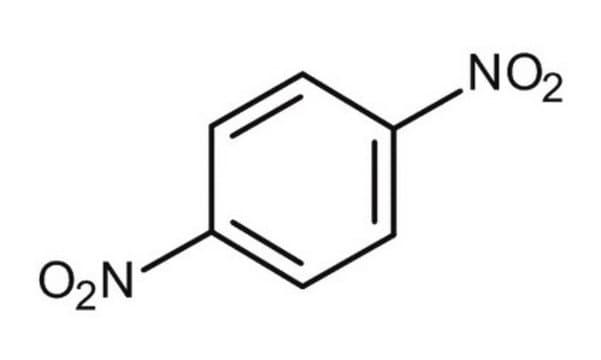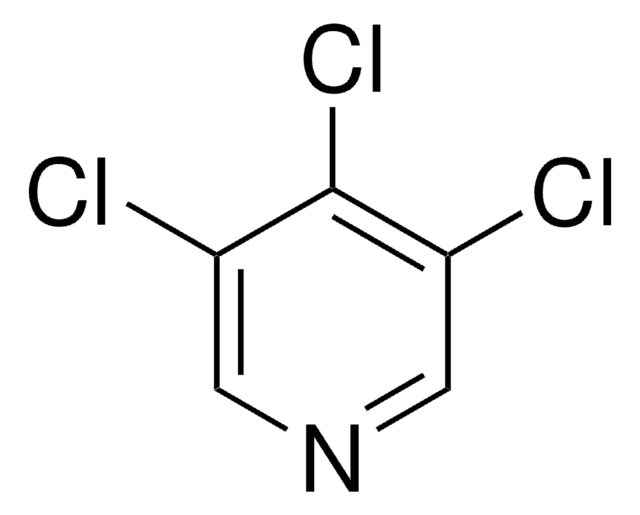102369
1,4-Dinitrobenzene
98%
Synonym(s):
p-dinitrobenzene, para-Dinitrobenzene
About This Item
Recommended Products
Assay
98%
bp
183.4 °C/34 mmHg (lit.)
mp
170-173 °C (lit.)
solubility
alcohol: soluble 1g in 300ml
boiling water: soluble 1g in 555ml
cold water: soluble 1g in 12,500ml
benzene: very slightly soluble
chloroform: very slightly soluble
ethyl acetate: very slightly soluble
density
1.625 g/mL at 25 °C (lit.)
SMILES string
[O-][N+](=O)c1ccc(cc1)[N+]([O-])=O
InChI
1S/C6H4N2O4/c9-7(10)5-1-2-6(4-3-5)8(11)12/h1-4H
InChI key
FYFDQJRXFWGIBS-UHFFFAOYSA-N
Looking for similar products? Visit Product Comparison Guide
General description
Application
Preparation Note
Signal Word
Danger
Hazard Statements
Precautionary Statements
Hazard Classifications
Acute Tox. 1 Dermal - Acute Tox. 1 Inhalation - Acute Tox. 2 Oral - Aquatic Acute 1 - Aquatic Chronic 1 - STOT RE 2
Storage Class Code
6.1A - Combustible acute toxic Cat. 1 and 2 / very toxic hazardous materials
WGK
WGK 3
Flash Point(F)
302.0 °F - closed cup
Flash Point(C)
150 °C - closed cup
Personal Protective Equipment
Certificates of Analysis (COA)
Search for Certificates of Analysis (COA) by entering the products Lot/Batch Number. Lot and Batch Numbers can be found on a product’s label following the words ‘Lot’ or ‘Batch’.
Already Own This Product?
Find documentation for the products that you have recently purchased in the Document Library.
Our team of scientists has experience in all areas of research including Life Science, Material Science, Chemical Synthesis, Chromatography, Analytical and many others.
Contact Technical Service










